Expert Advice: Can Flat Tires Be Repaired?
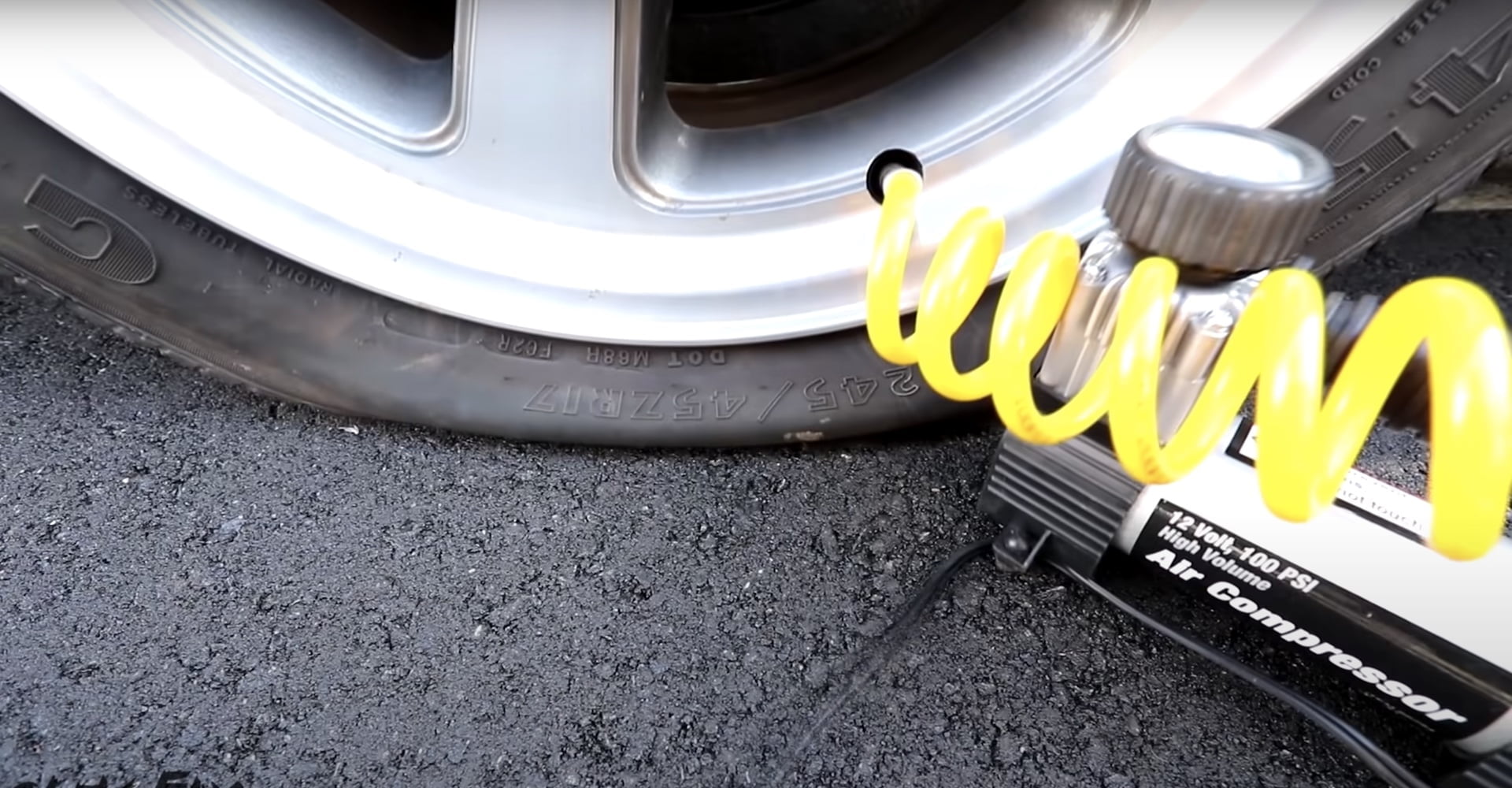
If you’re stressed out about your flat tire, take a deep breath – there are safe and cost-effective ways to repair most punctures.
Read on to discover the proper methods for repairing a tire puncture and the cases when a tire is deemed unrepairable. By the end of this article, you’ll be equipped with the knowledge to make informed decisions about your tire repair needs.
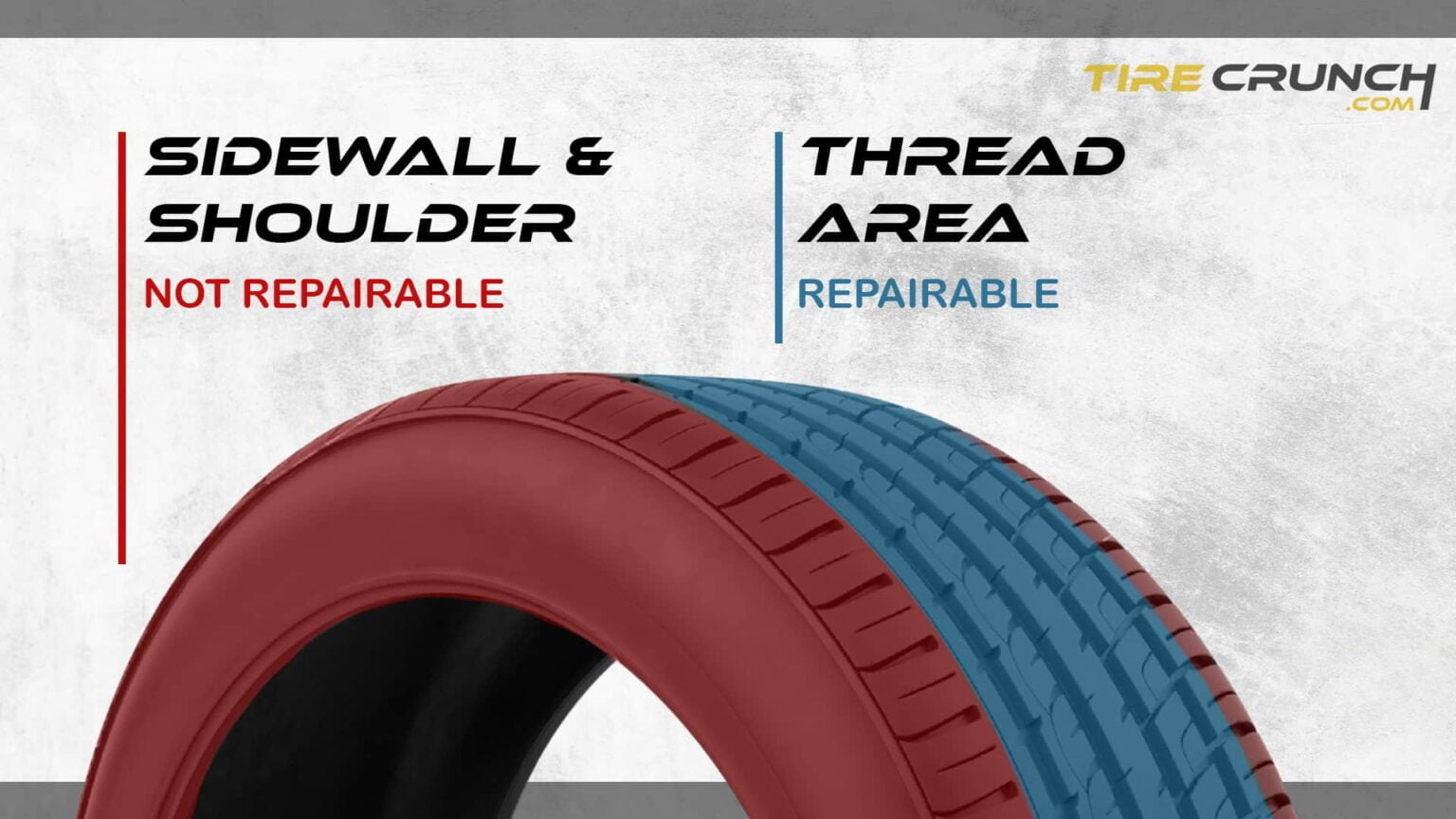
Key Takeaways: When Can Flat Tires Be Repaired?
When Should You Replace A Punctured Tire?
You drove on the flat
If you drove just several minutes with a flat tire, it’s likely that the inner structure of the sidewall has been damaged and the tire cannot be repaired. Tires are not designed to support your vehicle when uninflated, so, when you have a flat, it’s best to drive only a short distance – such as yards, rather than miles.
Your Puncture Is In The No Repair Zone
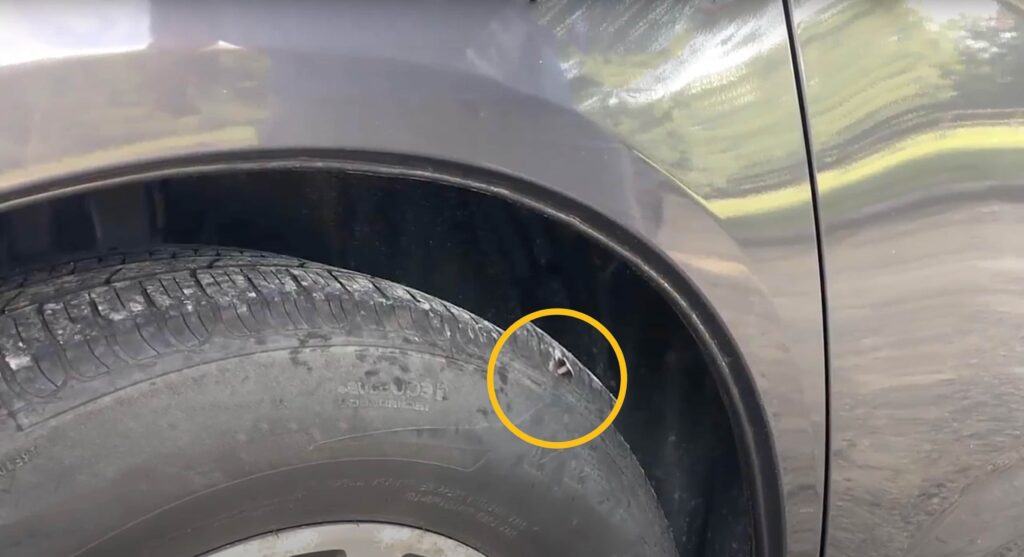
If your puncture is near the sidewall, then you may be out of luck – tire shops won’t usually repair such punctures for safety reasons, as per the standard industry guidelines. Modern tires are designed to be puncture-free along the sides and about 20% in from the sides.
The size of The Damage is Bigger than one-quarter inch
If you ever find yourself in a situation where the puncture in your tire is caused by something more than a regular nail or screw, such as a chunk of metal, there’s no way to safely repair it. The metal tends to bruise or gouge the tire on either the inside or outside and no plugging or patching will get you out of this unscathed.
Severe Damage
When you have an issue with your tire, such as bubbles, cracks in the tire sidewall, cracks in tire thread, or cupping, it is usually unrepairable. Even if that isn’t why your tire went flat.
If any areas of the tire are worn beyond the tread wear indicators, or if your tire is older than the internet, it’s also not repairable.
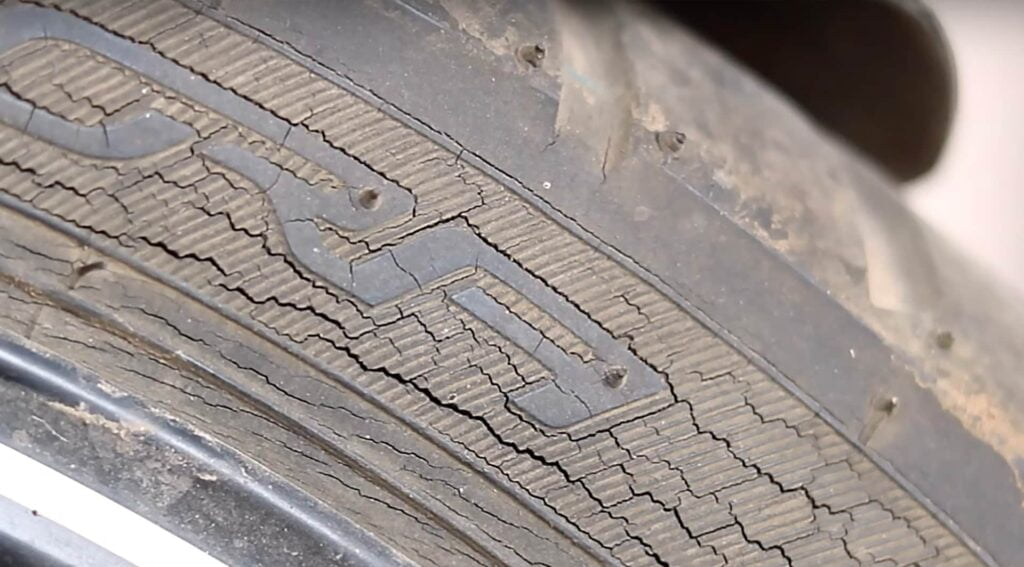
Lastly, if your tire is unevenly worn and any of the metal parts inside are visible, then it’s definitely time for a replacement. Trying to repair a puncture on an unsafe tire can be dangerous and could lead to more issues down the line.
You spot a bulge
Tire bulges can occur on either the sidewall or the tread of a tire. On the sidewall, they are caused by underinflation, which weakens the rubber and causes it to expand outward. On the tread, they are usually caused by broken steel belts in the tire, which is an indicator that the tire has sustained significant damage and needs to be replaced.
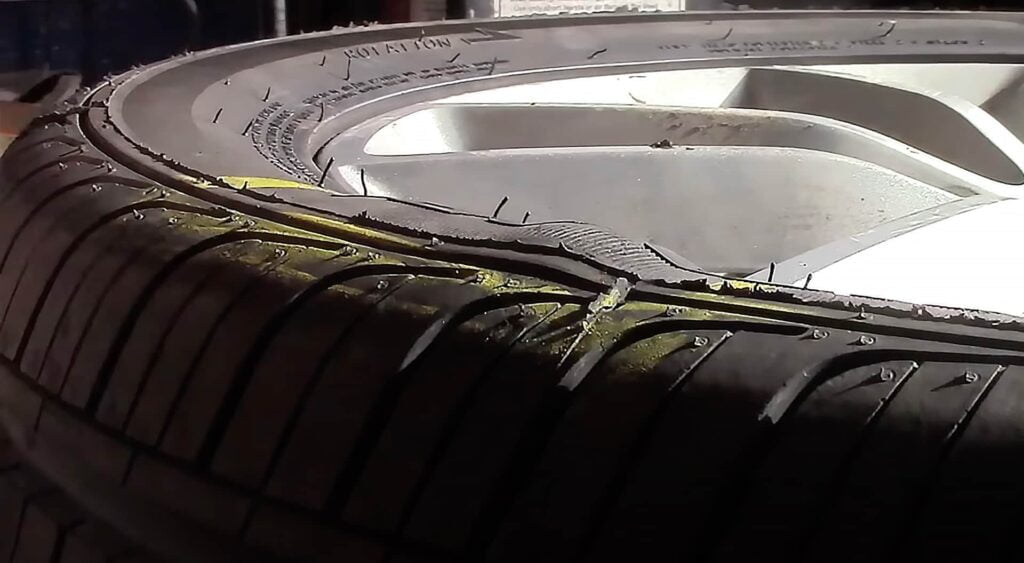
It's important to note that driving with a bulge in your tire is dangerous and should be avoided at all costs.
The new damage is close to the previous repair
If a tire has been previously repaired, any new damage that is close to the previous repair may not be able to be fixed. As previously mentioned, the tire is repairable if the new damage is at least 16 inches apart from a previous repair. Additionally, the maximum number of repairs allowed in a tire is typically two.
Basics of Flat Repair
The only way to properly repair a tire puncture is to fill the puncture with a repair stem, then back it up with a patch. Known as a combination repair or patch/plug repair, this technique is recommended by both the National Highway Traffic Safety Administration (NHSTA) and the Tire Industry Association (TIA).
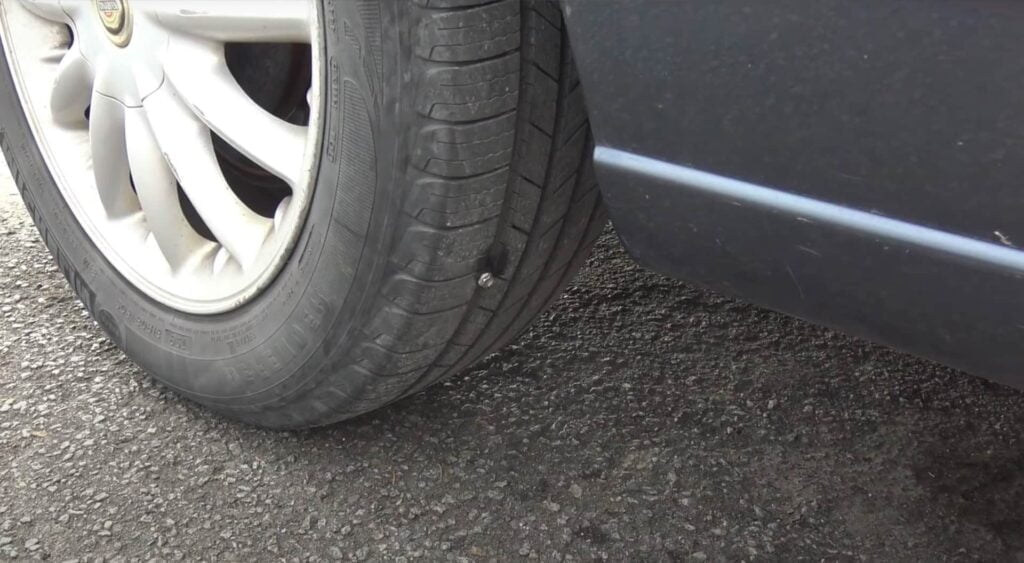
Fixing the flat
Tire puncture fixes start with the repair shop identifying the source of the leak. The technician will submerge the tire and wheel in water to make sure there are no other leaks. After that, they’ll take the tire off the wheel and will inspect both the inside and outside of the tire for structural problems and any previous repairs.
If the tire is deemed repairable, the technician will buff the affected area to avoid any damage to the liner. After that, they will use vulcanizing compound and a one- or two-piece plug patch combination to fill the hole and seal up the liner.
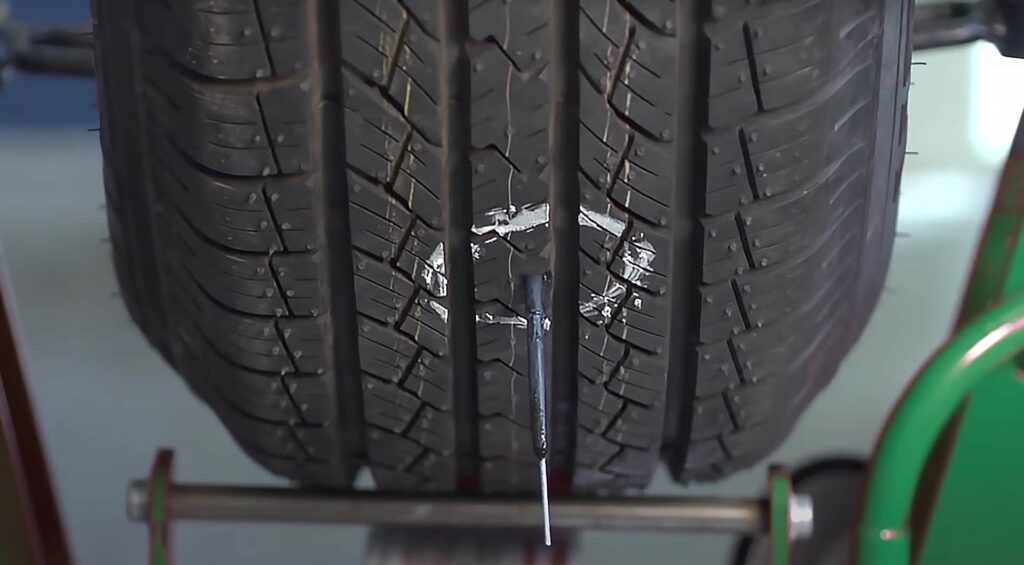
This sealing technique ensures an airtight seal while also protecting the cord material. Following this, a combination repair or patch/plug repair must be completed in order for it to be considered a proper repair as recommended by NHSTA and TIA.
Can Run Flat Tires be repaired?
The answer whether a run-flat tire can be repaired or not is not as straightforward as it may seem. While some manufacturers and technicians claim that it is possible to repair a run flat tire, others will not agree to patch up a run flat for you.
For example, tire brands like Dunlop, Bridgestone, and Goodyear are advising inspecting the tire’s inner liner to determine if it’s safe to repair. If the inner liner has not been damaged, repairing a run flat tire is perfectly fine.
On the other hand, Pirelli does not recommend repairing run-flat tires as it is difficult to determine the extent of damage caused by driving with a flat tire. Thus it is better to replace the tire.
Can Tires With Side Bubbles Be Repaired?
If you notice a small bubble or bulge in the sidewall of your tire, it is an indication that the tire has sustained high-impact damage. Driving on a flat tire, hitting a pothole or curb too hard, speeding over speed bumps or railroad crossings, and overloading the tires are all possible causes.
A tire with side bubbles should not be repaired and should be replaced immediately as it poses a potential danger.
Do Emergency Tire Repair Kits Work?
While sealant kits are great for emergency situations when you don’t have a spare, or need to get out of an emergency quickly, they should not be used as a substitute for properly repairing your tire.
Sealants do not provide permanent protection and may actually make the problem worse through clogging and corroding the stem, resulting in a more costly repair later on. It is best to seek professional help when it comes to tire repairs.
Final Words
In conclusion, a properly repaired front tire is considered safe when a combination repair or patch/plug repair technique was used (as recommended by NHSTA and TIA), and the hole was no more than 1/4 inch in diameter and located in the tread area.
If you have two punctures at least 16 inches apart, it might be possible to repair them. However, if the puncture has caused damage to the sidewall, if the tire is aged or worn out, or if there is a large gash or hole in the tread, then it’s probably best to invest in a new tire.
